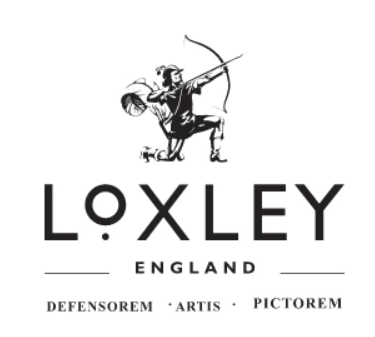How to choose the right frame for your artwork

The Loxley stock range of DIY Tray frame kits will enable artists to assemble a frame for any Loxley canvas paintings with just a standard screwdriver, pva glue and hammer. The chosen moulding is cut to size to match the range of Loxley canvas sizes (allowing for a breathing gap around the painting). This DIY option saves money and having standardised sizes makes changing frames and artwork around at a later date much more feasible.
Loxley’s bespoke framing service (launching 1st July) will offer a large range of framing options, including mount cutting and – for collect customers – a glazing option. This is ideal where the artist or their client wants to really bring out the painting or compliment it to their décor, or the painting size is non-standard. A vast range of moulding is available, from modern to classical to rustic and hand-finished. The framer will be able to show you a corner piece of the different moulding options, these chevrons are useful to hold against the artwork and get a pre-view of the finished work.
Framing is an art in itself so choosing the right frame can massively enhance an artwork. So, when it comes to framing artwork, there are a number of points to consider. The frame needs to focus the attention on the artwork as well as protect the artwork.
Framing Oil Painting
Oil Paintings are usually framed without a glass protective layer unless it is particularly valuable or at any risk from damage. Oil paints takes a lot longer to dry than acrylic or any other medias, so although it may feel touch dry after a few weeks, it often will take much longer to full dry out. The best way to protect an oil painting is by applying a protective coating of varnish, as it enhances the colours but also prevents any dirt from damaging the artwork.
Framing Acrylic and Mixed Media Painting
Acrylic paint dries a lot quicker than oil paint, and this can have an affect on how you frame an acrylic painting. Acrylic paint is vulnerable to cracking if it is left in a warm environment, as the paint softens in high heat and then when it cools is can crack. Make sure you keep paintings away from sources of heat to avoid this happening.
Works of art that with three-dimensional objects, are usually left unframed, however, they can be framed but make sure you take all the extra dimensions into account.
Popular Frames
Two popular framing methods are Tray and Close mount. A Tray or ‘floater’ frame shows the edges of the painting and usually includes a gap between the work and the frame edge. Close mounted framing is where the frame moulding lips over the edge of the artwork by a few millimetres.
Glass is ideal for delicate surfaces such as watercolours, pastels and oils (which can remain soft for long after the painting is finished). It can also bring out the colours whilst protecting the artwork from dust and air pollution. Non-reflective glass is more expensive than float glass, but brings the art out to its fullest. Acrylic glazing is another option and one that Loxley uses where couriers are involved.
Mounts are ideal for watercolours, prints and drawings. These provide a space between the painting and the frame edges and maximise the size and impact on the wall. Various colours and tints are available so you can best compliment the artwork, and again there is a whole host of creative options; double mount allows an extra band of darker or lighter board, multi-aperture can separate a numbers of pictures within one frame etc.


![How to Varnish a Painting [Professional Tips]](http://loxleyarts.com/cdn/shop/articles/how-to-varnish-a-painting_c34f75bb-5279-4b2b-9e74-50950931776d.jpg?v=1762921912&width=1080)
